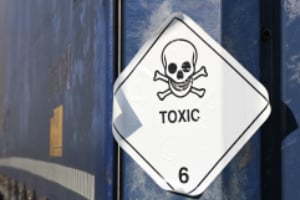
OSHA’s Hazard Communication Standard (HCS), also known as the “employee right-to-know” standard was developed to protect employees from exposure to hazardous products and chemicals. This standard requires all employers to develop a written program addressing labeling and warning requirements, material safety data sheets (M)SDSs, and employee training on hazardous materials.
The standard also requires employers to develop and maintain a list of all hazardous substances in the workplace and a description of the methods the employer will use to inform employees of the hazards related to nonroutine tasks in the workplace.
Environmental management systems help facilities comply with OSHA’s HCS through intelligent software to make compliance easier and more manageable. To ensure chemical safety in the workplace organizations create software to assist facilities in organizing information about the identities and hazards of the chemicals to workers through SDSs, labelling, and training to demonstrate commitment to reducing workplace incidents to achieve safety for everyone.
Maintaining SDSs/MSDSs and Your Chemical Inventory
The Hazard Communication Standard requires a list of hazardous chemicals in the workplace as a part of the hazard communication program. This list serves as an inventory of all the chemicals needing an SDS. The best way to prepare a comprehensive list of chemicals is to survey the workplace and cross reference your purchasing records. Employers can walk around the office, yard, and project sites recording the product names of all chemicals, along with the names of the manufacturers, addresses, and phone numbers. The inventory list of on-site chemicals should include chemicals in all states—gases, liquids, solids, etc. For environmental compliance the hazardous nature of the chemical and the potential for exposure determines whether it should be included in the chemical inventory.
Inventory Tracking software maintains a comprehensive overview of your site’s inventory. You can couple inventory tracking as well as an on-site audit to determine all your on-site chemicals. Chemicals in containers or pipes, welding fumes, dusts, and exhaust fumes are all sources of chemical exposures. You can maintain proper chemical information and plan for compliance by making a list of the locations of the chemical products within the workplace and hazards as found on the label. Use your inventory list to determine if you have received SDSs for all on-site chemicals to clear any discrepancies. Employees should not use any chemicals that don’t have an SDS. Environmental management systems should have SDS/MSDS software that can allow employees to view and query SDSs instantly and use the chemical inventory list for Tier II reporting.
If you ever change the raw materials in your blends or mixtures, it’s important to do chemical revision tracking to make sure you know what chemical hazards were present at any given period and to track if different processes are using different chemical combinations under the same product name. Using an SDS authoring tool like ERA’s means you get revision tracking and product archiving automatically so you don’t need to worry about the challenges in maintaining multiple revision records.
OSHA Compliant Container Labels
Employers must properly label containers and manufacturers must also ensure that all shipments contain OSHA compliant labels on all hazardous chemicals. SDS Authoring Software can give your facility the ability to create additional labels quickly and efficiently, including secondary containers labels and shipping labels in English and other languages for employees who speak another language per OSHA requirement.
Chemicals found to have new hazards must be properly labeled with new information by chemical manufacturers, importers, or distributors. If the chemical is no longer produced or imported, an additional label must be added to the chemical before it is shipped or introduced to the workplace again.
Portable or secondary container labels are required when operations in a work-place setting includes the transferring of smaller amounts from the original container to a secondary container such as a beaker, flask, or bottle. The label requirements for OSHA follow the Hazardous Communication Standard in the US.
The common causes of incidents that are traced back to secondary container labels include misunderstanding regarding:
- Not using the same material within the same work shift as the person who made the initial transfer from primary to secondary container.
- The person who supervised the transfer leaving the work area.
- The secondary container moving outside of the work area to a location where it cannot be properly identified.
A regularly updated regulatory database along with an SDS library makes updating labels easy and prevents health and safety incidents or accidents from occurring.
Another overlooked factor is the need to be able to review SDSs or labels on the fly and in the field. If you’ve centralized your SDS library, you can take things a step further by making it accessible online through a secure mobile app. ERA provides a free SDS Viewer mobile app to all our SDS software users so they can review SDSs for an product they are using on the go.
OSHA Training
OSHA’s Hazard Communication Standard requires employees to be trained about hazardous chemicals they may encounter at work. Training may cover specific hazardous chemicals or broad hazard categories. Employers are responsible for administering supplemental training as employees or hazards change. Training must be documented with date, covered topics, and trainer’s name. Industry specific training can be found in the Title 29, Code of Federal Regulations Part 1910.
Training requirement violations occur in nearly every standard in OSHA’s top 10 violations list; therefore, there is a growing need for proper training. With OSHA citations ranging from $7,000-70,000, 2016 marked the third consecutive increase in annual workplace fatalities recorded by the Census of Fatal Occupational Injuries (CFOI) since 2008 with 5,190 fatal work injuries.
We recommend using a Learning Management System (LMS) to track the OSHA training courses your team completes to more easily demonstrate your compliance. An automated training software will also send your managers reminders when someone needs a refresher course. ERA’s dynamic LMS delivers a fully automated learning and training platform for the full spectrum of OSHA training requirements.
At minimum OSHA training must include:
- Methods and observations use to detect the presence of hazardous chemicals in work area
- Physical and health hazards of all chemicals in work area
- Measures employees can take to protect themselves from these hazards.
- Emergency procedures
- Personal protect equipment
- Details and Explanation of hazard communication program
Consolidating Requirements into a Plan
All the compliance measures mentioned above must be incorporated into a written plan. Each written program must contain the following information:
- Container-labeling information
- Material safety data sheets
- Methods of training
- Chemical inventory lists
- Hazards of non-routine tasks and chemicals contained in unlabeled pipes in their work areas
Additionally, the chemical inventory list should be kept with the written program, because it may need to be amended as new chemicals are purchased. The best practice for record keeping is to centralize all data and compliance measures electronically in one place for better record keeping.
Overview
Knowledge and training through OSHA’s HCS provides employees with information that helps provide a safe workplace for employees. Some of the easiest ways software can help you demonstrate HCS compliance is by maintaining SDSs, updating your on-site chemical inventory, and providing LMS training to employees. Intelligent software helps better establish proper work practices, OSHA compliance, and aims to prevent work related illnesses and injuries for facilities.
This Blog was Co-Authored By:



August 23, 2018


Comments